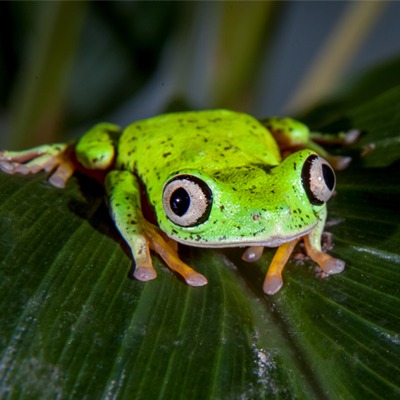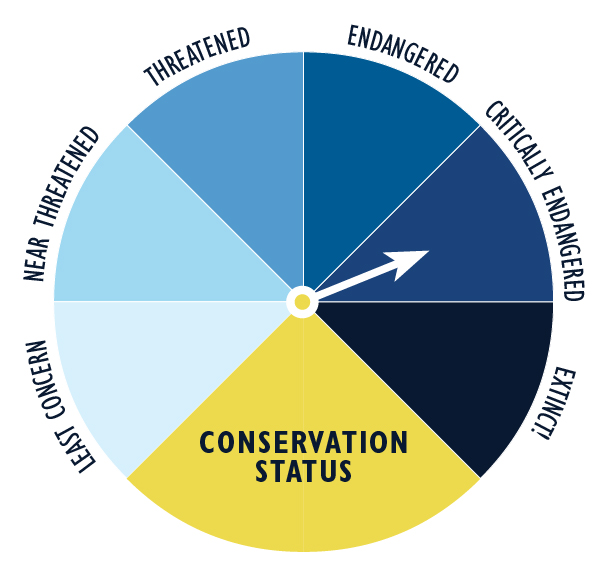
About Lemur Leaf Frog
Lemur leaf frogs are small, bright yellow and green, and measure no more than two inches. Interestingly, they can change their color based on whether they are active or resting — at night when they are active, they turn brown to camouflage themselves from predators.
Habitat
Lemur leaf frogs are fragmentarily distributed in Costa Rica, Panama, and northern Colombia. They live in undisturbed humid rainforest environments in both montane and sloping lowland forests.
Diet
Their diet consists of insects and other small invertebrates.
Family Life
Females lay 15 to 30 eggs on the underside of a leaf and rain washes larvae into the water. Once in the water, tadpoles develop into adult frogs over 90 to 150 days.
Conservation Status
The conservation status of the Lemur Leaf Frog is classified as critically endangered.
Threats
- Their biggest threat is chytridiomycosis, which is a fungus that infects the skin and interferes with breathing and natural defenses. Lemur leaf frogs may actually be more resistant to the chytrid fungus, possibly due to pigments contained in their skin.
- As with many similar species, the lemur leaf frog is susceptible to habitat destruction and fragmentation, as land is cleared to make room for various development projects.
Facts about Lemur Leaf Frog
Class:
Amphibia (amphibians)Order:
Anura (frogs)Family:
Hylidae (tree frogs)Genus:
Agalychnis (tree frogs)Species:
Agalychnis lemur (lemur leaf frog)Life Span:
Estimated 5 – 7 yearsSize:
Male: 1 – 1.6 inches (30 – 41 mm) / female: 1.5 – 2 inches (39 – 53 mm)Weight:
Unknown
Fun Facts
- Unlike many frog species, lemur leaf frogs can bask in the sun for extended periods of time without drying out. It is believed they are able to do this due to a pigment in their skin called pterorhodin, which reflects heat off the surface of their skin.
- They move very slowly, walking hand over hand. They rarely jump unless fleeing from danger.